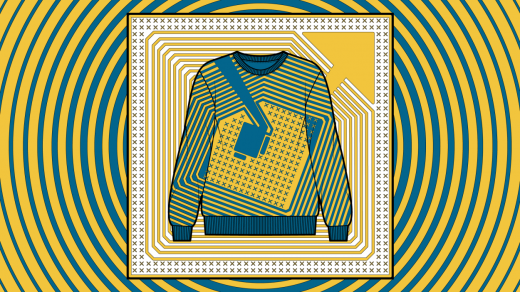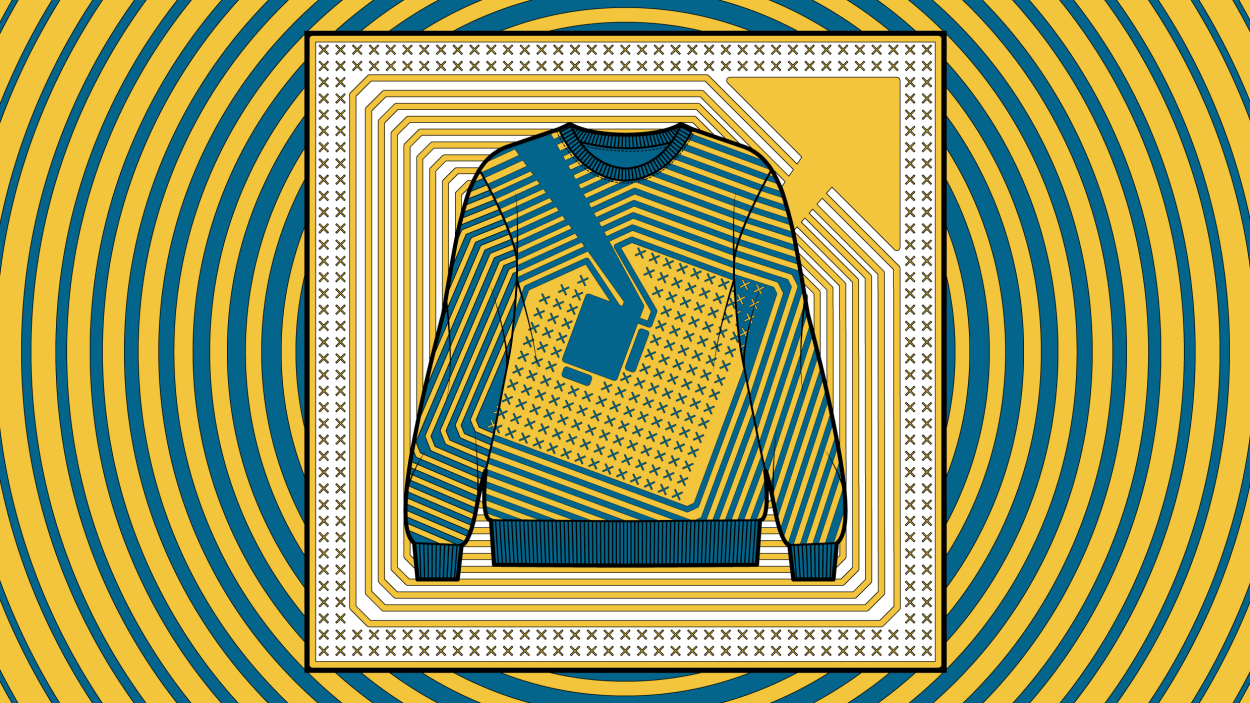The solution to fashion’s sustainability crisis may be connected clothing tags
In November, H&M launched a new retail format at its 7,000-square-foot space in Brooklyn’s Williamsburg. Some of the new tech features incorporated in the store’s design include smart mirrors, which can detect the size and color of clothes the customer tries on, and mobile payments enabled around the store. But the most important feature is one that customers will barely notice: Every item is tagged with encoded radio frequency identification (RFID) tags, giving the store and its customers the ability to track the store’s inventory and size options, all in real time.
The tags also can be embedded into garments or accessories themselves, and have seen increasing use from such brands as Salvatore Ferragamo and Lululemon, which have recently started putting RFID tags directly into shoes and bags to track them outside the store—and potentially make buying legitimate preowned products easier for shoppers. Another technology that can be used to tag garments– sometimes in the form of a scannable QR code on the label– called near-field communication (NFC) lets users scan the tag to get more information about the product and interact with the seller or brand that makes it.
Most retailers only know approximately how much inventory they have in stock. Store associates manually log individual dresses or sweaters or shoes by scanning individual barcodes: a system that is prone to human error. On top of that, when they use a manual-logging system, companies have no idea what happens to goods once they leave the store. How is a garment disposed of? Does it ever get resold?
Tagging technology like RFID and NFC lets brands answer some of these questions. By adding smart labels that can be read remotely and simultaneously to garments and bags, brands can keep better track of their inventory and understand items’ life cycle more completely. In many retail settings, RFID tags have historically served in place of bar codes, letting companies keep track of their stock. At Walmart, for instance, scanners can read and record many items on a shelf or in a designated area. While those RFID tags helped track an item’s location in a store, they only worked within a range of a few feet (in August 2020, Victoria’s Secret debunked claims that the tags in their bras allowed the company to track customer movements).
Some versions of the tags can record and relay information to resale or recycling companies, including an item’s age and where it’s been sold previously. NFC can also be used to give information to customers, from styling tips to the option to reorder when they scan the label, when they connect to it on their phones.
And while RFID and NFC are not a new technologies, a growing number of fashion brands are adopting them, seeing it as a way to better manage its supply chain, and start resale programs. Over the past few years, brands and retailers alike—including H&M, Nike, Ebay, Coach, and Rent the Runway—have incorporated the technology into their factories, which only requires the addition of tagging machines or adding a QR code-printing step to existing production lines.
Natasha Franck, founder and CEO of Digital ID company Eon, which works with brands, including Coach, Pangaia, and Target, says she started the company seven years ago to help brands become more sustainable. “In order to enable a circular business model transformation, we need to turn physical products into traceable assets,” she says. “We have been solving all barriers from the hardware—NFC tags and QR codes—to the tracking software, to the data compiling to enable brands to create on-product IDs that connects it to the company through its lifecycle.” Franck also says that Eon is working with brands to create digital IDs– also known as Digital Product Passports, which are soon to be required by law in the EU– that would help store and trace the environmental information of a product.
The technology also lets companies more easily offer customers the option to click and collect in store, ship from store, and track their orders closely because it makes following inventory easier. Customers can scan the tag on a product and reorder it, or get recommendations for other items to style it with. “Forty-six percent of customers look at outfit recommendations—so an NFC tag could turn a product into an e-commerce channel, and generate more profits for a brand,” says Franck, adding that some of the brands Eon works with will be rolling out features like this in the near future.
Alison Loehnis, interim CEO of Yoox Net-a-Porter, says, “Customers can scan QR codes on their item’s care label to access its individual Digital ID via their smartphone. They can find content and information about each piece’s design and how it was made, care instructions and styling tips, to ensure their item remains in good condition and maintains its relevance over many seasons,” she says. “It comes back to promoting a longevity mindset amongst our customer base.” Her company started working with Eon (which is backed by Net-A-Porter founder Natalie Massenet’s Imaginary Ventures) in 2020 and embedded Digital IDs in more than 1,300 designs across private-label collections in 2021.
Franck also claims that brands can increase the profitability of every item with digital IDs. Because companies can use tags to quickly and easily authenticate items, they can set up their own resale sites with some rolling out in the next year, according to Franck. This allows brands to recoup profits that vintage and luxury resellers make on their clothing by selling them on their own platforms while guaranteeing shoppers are getting a legitimate product. NFC and RFID tracking abilities through digital IDs also can serve as the foundation for brands to launch their own rental programs and keep track of the inventory. “Once your products with NFC tags are out in the wild, it’s kind of like a Tesla; you can update them with new capabilities remotely,” says Franck. “So you might start by connecting them with customer-relationship-management software, and then six months later you might want to use NFC tags to start a resale program, and later a rental program.”
Joon Silverstein, SVP of global marketing, creative, and sustainability at Coach, notes that adding digital ID tags to its inventory is a step toward turning the company into a circular ecosystem (In a 2021 viral video, Coach was accused of slashing and throwing out items that could no longer be sold, a practice Silverstein says has ended). “It’s important to be able to track the product journey,” she says. “We have a program where customers can bring back preloved products to any store in North America and exchange them for store credit. After that, it gets repaired, restored, recomposed, reimagined, or recycled. Digital IDs will help us track that journey and share it with customers.”
An earlier version of this article misstated that Eon uses RFID technology. Eon helps implement NFC technology and QR codes to create digital IDs.
(30)



